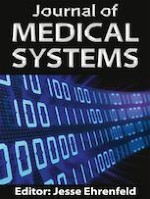Erschienen in:

01.12.2023 | COVID-19 | Correspondence
Enhanced Monitoring System to Better Monitor High-Risk COVID-19 Patients
verfasst von:
Thong Chuan Eugene Koh, Jia Yi Goh, Wen Kien Joachim Yau, Ta Wei Kevin Kok, Martin Yong Kwong Lee, Kelvin C. Y. Goh, Meng Wah Sng, Si Jack Chong
Erschienen in:
Journal of Medical Systems
|
Ausgabe 1/2023
Einloggen, um Zugang zu erhalten
Abstract
Telemedicine (TM) is a useful tool to extend medical care during a pandemic. TM was extensively utilized in Singapore during the COVID-19 pandemic as part of the Nation’s COVID-19 healthcare strategy. Patients were risk stratified to prioritize limited healthcare resources and the Telemedicine Allocation Reconciliation System (TMARS) was adapted to monitor and manage limited TM resources. High-Risk patients (Protocol 1) had an escalation rate of 4.87%, compared to the non-High-Risk patients’ 0.002% and TM doctors spent an average of six hours to complete one tele-consultation. In order to optimize the efficiency of the TM system, an enhanced monitoring system was implemented in March 2022. The intent was to focus monitoring efforts on the High-Risk patients. High-Risk patients reporting sick for the first time were prioritized to receive tele-consultations through this system. With the aid of a data-driven dashboard, the Operations Control and Monitoring team (OCM) was able to closely monitor the performance of the various TM providers (TMPs), sent them timely reminders and re-assigned patients to other TMPs when the requisite turnaround time was not met. Implementing the enhanced monitoring system resulted in a significant reduction in the average time taken to provide tele-consultations. After 3 months of implementation, the percentages of consultations completed within two hours were raised from 75.7% (February 2022) to 96.8% (May 2022), greatly increasing productivity and efficiency.